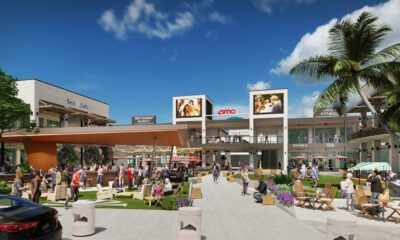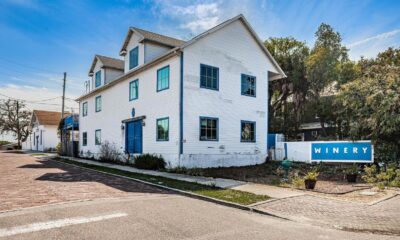Community Voices: St Pete’s built environment
Welcome to the Catalyst’s Community Voices platform. We’ve curated community leaders and thinkers from all parts of our great city to speak on issues that affect us all. Visit our Community Voices page for more details.
After reading through the comment section of every new development announcement in town, we can all agree that St Pete residents are experiencing quite a bit of anxiety. They certainly seem to know what they don’t want: another exclusive luxury condo or apartment building … It’s all happening at a dizzying pace and honestly, many of us are being priced out. But why do some perceive those physical buildings as such an affront to who we are as residents of St. Pete? Do we find them to be too sterile and not “St. Pete” enough? What is the winning recipe for a new St. Pete building?
An important part of understanding our culture is establishing where we came from, the legacies we carry, and the values that collectively define us. In the late 19th century, St. Pete’s few hundred residents were all transplants from other places. Peter Demens was Russian and named the city after his hometown. Many of the city’s other early founders were from New York, Pennsylvania, Michigan, Alabama, Georgia … you name it. St. Pete’s culture has never been insular and has been greatly influenced by the culture of tourism and newcomers to the city. I arrived from France in the late ’90s, and view my adoptive hometown through my own lens. I have contributed my culture to it, and it has helped reshape mine. My impression of St. Pete then was an odd mix of beach culture and a sizable retirement community. We’ve witnessed impressive growth since. St. Pete has rebranded itself as a City of the Arts, a unique cultural destination, and an appealing place to live.
As a local architect, I participate in shaping the physical growth of our city and I am fascinated by the intersection of people and their built environment. I spend the better part of my time thinking about how to design buildings that speak the language of St. Pete. In the summer of 2018, as a student at the USF School of Architecture and Community Design, I was invited to participate in a two-day design charette exploring solutions for the redevelopment of the Tropicana Field site. This experience led to a year-long intensive study of the historic Gas Plant neighborhood culminating in a book entitled Where Have all the Mangoes Gone? I was touched and inspired by the history of the neighborhood, and the people who kindly shared their stories with me. One of the design challenges that a project of this scale and magnitude presents is how to achieve authenticity. A successful public realm needs to speak the language of St. Pete, and I did a deep dive to learn its syntax.
It is a fascinating exercise to ask people what their hometown means to them. We share beloved institutions, we know some of the old brick roads like the back of our hand, the rich smell of that jasmine bush that perfumes the entire street during a certain time of the year, the mouthwatering mangoes from the neighbor’s yard … Those special places hold those sensory experiences that make us human. New development makes us anxious because it is often perceived as eroding those physical places that cradle our memories. Ultimately, our built environment acts only as a framework to hold our stories in space and time. While architecture can elevate our experiences and provide a visual backdrop and spatial context for these expressions of ourselves, we are ultimately the creators of the culture that resides between those walls. Architecture is the art of shelter and habitation, the mother of all art. The details of its facades ignite our senses and frame our experiences in the public realm. The volumes of space contained within hold our more intimate moments.
The charm of historic downtown St. Pete resides in its wide streets and two-to-four story street wall, creating about a gracious 1:1 building height to street width ratio, ensuring the street doesn’t overwhelm its occupant. A mix of low-, mid-, and high-rise buildings, each often included in the same block, create dynamic facades. The buildings themselves step back from the sidewalk to create arcades and breezeways for shade and shelter from the sun or an unexpected downpour. These features also create opportunities for exploration and discovery. Think of the Snell Arcade on Central Avenue with its little shops tucked in the breezeways. Can you picture its wrought-iron gates? The glass block in the sidewalks? That type of detail imprints eidetic images in our memories.
Most of the pedestrian experience is contained from the ground to 15 feet up the building facade. The attention to detail and materials used within this space is critical to defining an authentic experience. We can design new sustainable buildings inspired by our historic material palette, including strategically placed brick roads, granite curbs, hex pavers, brick facades and stone. Those materials activate our tactile and visual senses and speak to a sense of time and place. What is St. Pete’s color palette? In my opinion, we have painted our city with sunset hues.
St. Pete was founded upon the high ideals of the City Beautiful movement, which emphasized the beautification of the public realm, a rebellion against the 19th century over-industrialization of city centers and waterfronts. Thanks to William Straub’s vision, our downtown is graced with seven miles of preserved waterfront parks. Critically, we have kept the parks public, so all can enjoy the natural beauty surrounding us. Our most memorable neighborhoods are filled with picturesque shade trees. While palm trees are mainly ornamental and exotic to visitors from up north, they have no shade value. Residents from old St Pete remember the generous fruit trees that nurtured them, providing them with those indelible sensory memories. Those can provide us with shade too. Avocado trees can grow up to 40 feet tall and feed us for lifetimes. They remind us of our indispensable relationship to nature and each other. This commitment to the public realm is a core St. Petersburg value. We accordingly have a collective obligation to carry this spirit forward in how we design and elevate our public realm.
Inspiration is fueled by reconnection and remembering, each of which provides high symbolic and practical value. When we provide space to celebrate our achievements and reinforce our community values, our culture grows in line with who we genuinely are and aspire to be. This provides an opportunity to rejoice with the understanding that our memories will continue to live through the stories we tell. While some buildings were not built to last, we can hold up and hold onto those that were.
Let’s bring forth our creativity and paint the city with our own brush, write its poems with our favorite pens, sing its rhymes with our authentic voices, and design its buildings with heart.
Culture is ever-evolving and ephemeral, and we are all the architects of our culture in this very moment.








Melissa Gilbert
January 24, 2023at4:58 pm
I agree with Shirley Hayes.
Our city was “ little town with the metro vibe” – now it is becoming all metro.
People in the service sector or retirees are getting crushed.
I don’t agree with stacking people on top of people – creates heat islands ( concrete & asphalt) , light pollution and traffic with
its pollution & noise.
James Andjelic
January 21, 2023at6:54 am
No one deserves more thanks than Mr. Straub for dedicating 7 miles of shoreline as public parks; much like Daniel Burnham did in his design for Chicago. Although, I would argue that St. Petersburg FLA is more deserving of the title ‘Urbs en Horto’! The apparent rush to ‘Miamify’ St. Petersburg must be balanced against the voices of those lamenting that St. Petersburg simply has lost the charm it had ‘x’ years ago. The only constant is change. We cannot stop change (those mango and guacamole farmers sold their land for a reason). Yet, we do have the ability to control and shape the change around us. The author raises a variety of excellent points; I hope that the power brokers are listening!
Monica Kile
January 20, 2023at6:27 pm
What a brilliant essay! You’ve given us the words to describe what it is that makes St. Pete so special. So many of us (myself included) struggle to articulate what we like about downtown, but this points out tangible things like scale, architectural detail, and shade! It’s so good!!! I’m saving for future reference! Thank you!
Andres Allwood
January 20, 2023at3:15 pm
Well said Sarah, I couldn’t agree more and I’m inspired by your words as a call to action to pick up the brush as St. Pete citizens first and architects or policy makers second. FLW once said that “every great architect is – necessarily – a great poet. He must be a great original interpreter of his time, his day, his age.” In this case it is HER, but you certainly embody that for this city. I’ve noticed conversations on both sides of the aisle when it comes to affordable housing, design, the environment, can bleed into what Angela Brooks refers to as “BANANAs—Build Absolutely Nothing Anywhere Near Anything— type voices that are active in most neighborhoods, opposing projects that actually would contribute to the good of the community. All the posts have commenters saying don’t do great design because it’s not affordable and don’t do affordable because it’s too risky when neither are true and great design can dispel these fears and tackle more than one problem.
Shirley Hayes
January 20, 2023at8:00 am
St. Pete has definitely lost that small town ‘flavor’. ‘Regular People’ have been driven out. If you do not have money, you cannot afford to live here anymore. Waiters, cooks, CNAs, Teachers, Policeman and others are finding it difficult to afford to live here. In addition, folk that work retail are leaving also because salaries are too low as rent is ridiculous. Newcomers could care less what is built here and the rest of us may as well not be concerned any longer.
Shaquille Lashley
January 19, 2023at11:17 pm
Beautifully written, Sarah Jane. Brilliant mind and one who truly cares for this city. I appreciate your thoughtfulness toward St Pete’s future.